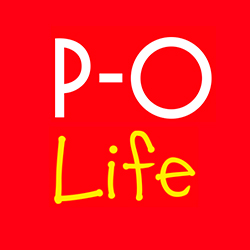Vin de Pays and Appellation Controlée explained.
by Jonathan Hesford of Domaine Treloar

I find a lot of people ask me what is the difference between Vin de Table, Vin de Pays and Appellation Controlée wine. Here is an attempt to explain it in the context of the Languedoc-Roussillon.
The Official Line
Historically, Appellation d’Origine Controlées (AOC) were set up to protect well known wine styles such as Champagne, Chablis, St Emilion and Chateauneuf du Pape. Since the 1930s a large number of wines which represent particular styles from particular areas have been granted AOC status. All AOC wines are controlled in terms of geographical location of the vineyard, grape varieties allowed, maximum yields and prohibition of irrigation. In most cases there are additional rules regarding methods of viticulture and winemaking. The wines have to pass a test by chemical analysis and panel tasting. The aim is to give the consumer some guarantee of the type of wine they are buying.
A Vin de Pays (VDP) is a wine made in a particular region from a list of allowable grape varieties and also subject to testing and analysis. The regions are larger than the AOC ones and the choice of grape varieties is wider. Traditionally a VDP was of lower quality than an AOC. The translation “Country Wine” is a bit misleading, regional wine is better.
A Vin de Table (VDT) is a wine which does not conform to the VDP or AOC rules. It does not have to be made within a particular region or from any particular grape varieties. VDTs are not allowed to state the grape variety or year of vintage on the label. Traditionally they represented the lowest level of quality.
VDP in the Languedoc Roussillon
In the Languedoc-Roussillon, with the possible exception of Banyuls, the AOCs are too large and do not have enough prestige to command a high price compared to, say, Gevrey-Chambertin or Pomerol. Therefore many top quality vignerons have chosen to work outside the AOC regulations, usually by making VDP. This means that VDP in the Languedoc-Roussillon is not necessarily of lower quality than an AOC. VDPs in this region fall into three segments:
Ordinary Vin de Pays
At the bottom are the traditional VDPs. Wines which are simply labelled something like “Vin de Pays de l’Aude”. They are cheap and cheerful wines usually made from the same traditional varieties as the local AOC but from declassified, irrigated or naturally over-productive vineyards. They still need to pass tasting and analytical tests so should not be faulty.
Vins de Cepage (Varietal Wine)
The second tier consists of what are more sensibly called Vins de Cepage –Varietal Wines. These are wines that are produced to satisfy the demand and counter the competition of varietally labelled New World wines. They are labelled VDP because popular varieties such as Chardonnay, Cabernet Sauvignon and Merlot are not permitted for the AOC wines of the region as they are not traditional to the area. Furthermore, the Languedoc-Roussillon AOC rules prohibit the naming of grape varieties on the label (with the exception of Muscat and Picpoul). So even a wine made from pure Syrah, would have to be a VDP to state Syrah on the front label.
Special Vin de Pays
At the top end are wines that the vigneron chooses to classify as VDP because it allows him to make a better wine that the AOC rules permit. Some of these wines are the most sought-after and expensive wines of the region e.g. Mas du Daumas-Gassac and La Soula.
Conclusion
The AOC wines of the Languedoc-Roussillon can vary widely in quality. In general the smaller appellations (e.g Faugeres, Pic St Loup and Banyuls) tend to have higher overall quality than the larger ones – Corbieres, Minervois and Cotes du Roussillon – but AOC status is not really a guarantee of higher quality, just style. In the Languedoc Roussillon, an AOC wine is not necessarily “better” than a VDP.
So how does the customer know what they are buying? Fortunately, because the region on the label cannot command a high price, the wine must speak for itself. Therefore, in this region, perhaps uniquely in France, price is a good indication of quality, or at least desirability. If the customer is willing to pay €12 for a VDP then it is probably very good and almost certainly better than an equivalently priced wine from a well-known AOC. Similarly, buying a cheap example of a wine from an expensive appellation is almost always a waste of money. Remember that in the New World there is no equivalent of AOC and all New World wines are effectively Vin de Pays. In Australia or the USA knowing a good producer is more important than knowing a particular region.

